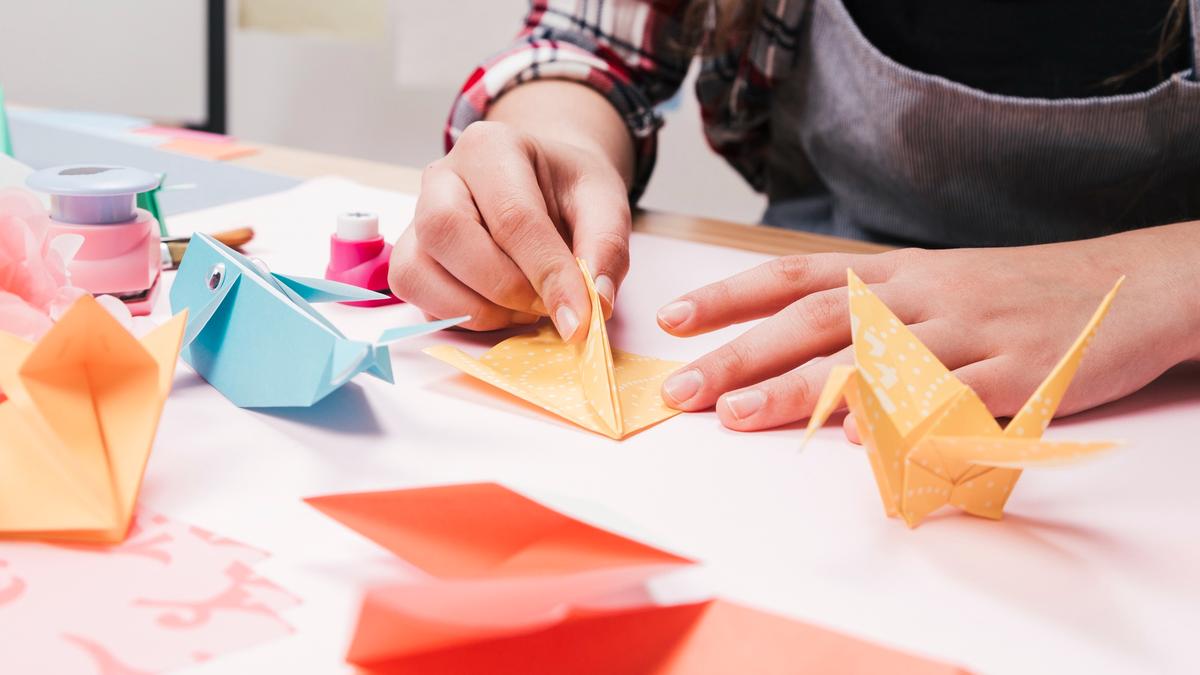
Unfolding the beauty of origami
The Hindu
Have you ever found a piece of paper and folded it into something beautiful like a flower or an aeroplane? If so, then you dabbled into the art of paper folding called Origami. From simple cranes to creative geometric stuff, origami is more than paper folding; it combines art, culture and science. Let’s unfold everything about origami!
Origami was first known as ‘orikata’ or ‘folded shapes’. In 1880, the name changed to origami from Japanese words oru - to fold and kami- paper. It is widely known that origami is a Japanese art form but it is not known that the paper folding tradition began in China around the 1st Century. For ceremonial purposes, the people of China used to burn folded paper representing gold ingots as an offering to the dead. This cultural exchange was passed on to Japan where it was practised by Buddhist monks.
Papers used to be extremely expensive for any commoners to afford. During the Edo period in Japan, feudal lords started to expand the paper industry and papers became much more available. As paper became readily affordable, people started to make origami art as gifts, cards and envelopes. The first ever origami art was a pair of folded butterflies used as decoration at a wedding. No single person is credited for inventing origami, however over a hundred years later origami developed as a cultural tradition. There is one name that stands out in the world of origami: Akira Yoshizawa.
Akira Yoshizawa is often called ‘the father of origami’ as he created over 50,000 different origami designs. Besides designing origami, he created the system of diagramming origami - the method to write origami instructions. Yoshizawa learned origami as a child and later taught his colleagues at the factor where he used to work on geometry concepts for their jobs.
In the year 1954, he published a book called ‘Atarashi Origami Geijutsu (New Origami Art) containing the basics and instructions about how to fold a particular model. This book made him the star and also the ‘cultural ambassador’ of Japan for bringing vast awareness of origami across the world. One of the most popular techniques of origami that employs wet, damp papers is founded by Yoshizawa.
Did you know it is believed in Japan that origami brings good luck? People follow a traditional way to wish for one’s good health and happiness - by folding a thousand paper cranes.
Sadako Sasaki was a young girl who survived the Hiroshima atomic bombing in the year 1945. She fell sick due to radiation exposure and developed leukaemia. During her time at the hospital, she started folding origami cranes, inspired by a Japanese legend that folding a thousand paper cranes fulfils one’s wish. She was determined to achieve good health and world peace, pouring every ounce of hope into all paper cranes.
Unfortunately, she passed away in 1955 and folded 644 paper cranes, but her story lives on. Her paper cranes became a symbol of hope and resilience across the world. In Hiroshima, there is a memorial in honour of Sadako, filled with thousands of beautiful and colourful cranes made by people worldwide. The memorial stands as a reminder of the importance of peace and the power of hope.











